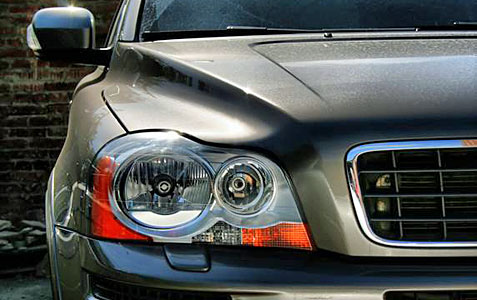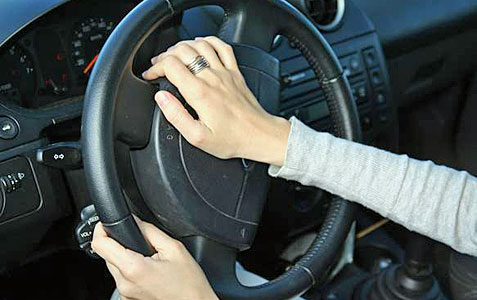The Future of DUI Devices
Cars Home / Stuff to Buy Channel / Bullz-Eye Home
Breathalyzers exist to test drivers who are pulled over for their blood-alcohol concentration. This works well for law enforcement, but what more can be done for prevention? Each year, there are about 147 million self-reported cases of drinking and driving in the United States, according to the Centers for Disease Control and Prevention.
In order to help decrease the number of people who get behind the wheel while intoxicated, new technology is being developed to keep people who are drunk from making it onto the road. While some devices exist now, others are still in the works. Here’s a look at some of the technology that might be incorporated into car design in the years to come.
Research and Development

Right now, there are already devices that exist to keep intoxicated drivers from starting their cars. They’re called ignition interlock devices, and they’re connected to a car’s ignition. The driver has to provide a breath sample to prove he or she is sober enough to drive. If there’s any alcohol on the driver’s breath, the engine won’t start. Also, additional breath samples are periodically required to make sure alcohol has not become a factor while driving.
In an effort to lower the number of drinking-and-driving instances, the Driver Alcohol Detection System for Safety project has been researching types of technology that can detect whether a driver is impaired in a less-invasive way compared to the ignition interlock devices that exist now. This would help increase the chance that the devices would be used on a wider scale, thus being more effective overall.
Reports from DADSS have suggested different potential solutions, including detection of alcohol from:
- Passenger compartment air samples
- Driving performance
- Emissions through the driver’s skin
- The skin via tissue spectroscopy
- Eye movements
It’s unclear which technology will be noninvasive, be able to withstand an array of environmental conditions, work seamlessly enough that it won’t slow down driving for sober drivers, and won’t need much maintenance.
Other Projects

Two companies are working together to create a device that isn’t invasive like breathalyzers and identifies a driver’s BAC through the skin. According to USA Today, the Automotive Coalition for Traffic Safety gave companies Takata and TruTouch $2.25 million in grant money to create the device and make it inexpensive enough so the units are affordable to the general public.
The device would be small enough to be placed on the start button of the car, and it would use infrared sensors to determine BAC. They’re hoping to make it about $200. The test, which can be used on a daily basis without a driver even realizing it’s at work, is as accurate as a blood test.
Nissan also has a vision of what can come in the future, and it’s displayed through its drunk-driving prevention concept car. The vehicle features some of the technology described in DADSS reports. For example, one type of technology involves the continuous tracking of the behavior of the car. The vehicle can identify signals that the driver is distracted or not paying attention. If this happens, the car will alert the driver and tighten his or her seatbelt to gain the driver’s attention.
Other options include facial monitoring, in which consciousness is determined by tracking the blinking of the driver’s eyes, and odor sensors, which can detect alcohol from the perspiration on the driver’s hand when they start to drive.Conclusion
While it’s unclear which type of technology will prevail and which will perform the most accurately, it is clear that research and investigation is being done to discover the best form of device.
You can follow us on Twitter and Facebook for content updates. Also, sign up for our email list for weekly updates and check us out on Google+ as well.











